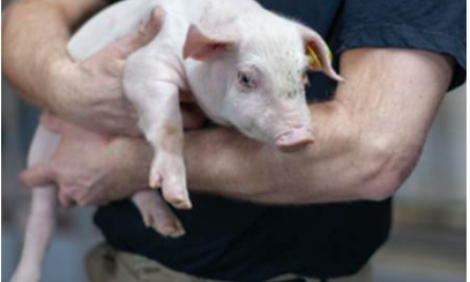



South Korea's FMD Outbreak to Impact Global Pork and Grain Trade
The present foot and mouth disease (FMD) outbreak in South Korea could mean greater demand for US pork products but lower demand for US corn into next year, according to a report from USDA Foreign Agricultural Service.South Korea's worst FMD outbreak in history has reportedly resulted in the depopulation of about 30 per cent of the nearly 10 million swine and five per cent of the more than three million cattle as of 7 February. The outbreak began in November and despite government containment efforts, ballooned to 146 cases throughout most of the country in two months. Culling is expected to level off as the government resorted to full vaccination of all the country's swine and cattle on 13 January. The expected cost of the outbreak has surpassed US$1.8 billion, according to South Korea's Ministry for Food, Agriculture, Forestry and Fisheries.
Domestic Meat Prices and Consumption Affected
Since domestic production traditionally supplies 70 per cent of pork consumption, prices rose sharply in response to short domestic supplies and strong demand in the run-up to the Lunar New Year holiday (2 to 4 February), when pork and beef are used in many traditional dishes. Pork is the most widely consumed meat at over 19kg per capita per year, compared to 10 and 8kg, respectively, for broiler meat and beef, according to the Korean Rural Economic Council. While consumers do not appear to have reduced their pork consumption due to FMD, faced with higher prices, they may shift to other protein sources such as poultry or seafood, as well as more imported pork and beef.
Impact on International Pork and Grain Trade
Whereas pork imports had previously been forecast up five per cent due to improving economic conditions, the FMD situation and changing consumption patterns could bolster imports by 30 to 40 per cent (as much as 150,000 tons). In an effort to curb rising prices, the government reduced import duties to zero (from 25 per cent) until June on 50,000 tons of frozen pork cuts and 10,000 tons of frozen pork bellies, which supports higher imports. As one of the world's largest pork importers, South Korea is a highly competitive market, with several suppliers who could meet additional demand.

But South Korea, with its very sophisticated feed industry, is also one of the world's largest corn importers (about nine million tons annually) because it is a key component in livestock and poultry rations. The reported 30 per cent drop in the swine herd has already resulted in a million-ton reduction in this year's corn import estimate and markedly slower import contracts by the feed industry.
Demand for US Products Could be Affected
As a major traditional supplier, the United States will likely see more pork exports but less corn. Higher domestic prices in South Korea could make US pork more attractive, and the temporarily reduced tariff on frozen pork is expected to benefit US exporters despite tight supplies.
US corn supplies relative to strong domestic and foreign import demand are also tight, contributing to higher world prices for most grains. However, less demand for corn from South Korea could help reallocate scarce US supplies and somewhat moderate domestic prices.
Impacts Could Last into 2012
It will likely take some time for the pork industry to fully recover, and with it, demand for imported corn. While culling had an immediate effect on the food supply, it also eroded future production potential for some time, as farms must remain vacant for about two months following FMD outbreaks. Large imports of swine breeding stock will be needed to replenish the depopulated sow stocks. The constraints on repopulating operations and the biological lags inherent in pork production would be expected to dampen demand for corn into next year. US pork exports will likely benefit during the time it takes for South Korea to gradually rebuild its swine industry.
Further Reading
| - | Find out more information on FMD by clicking here. |
February 2011








